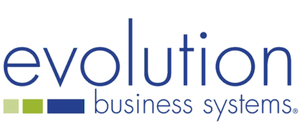Microsoft Dynamics 365 Business Central has several ways to record raw materials consumption on a production order. These are called flushing methods. Flushing Methods are only available on a Business Central Premium Core License with the Production Management module that enables complex, multi-level structures of bills of materials and routings, including scheduling and managing finished goods production.
What is flushing in manufacturing?
Flushing is the process of recording the movement of inventory items from a storage location to Work-in-Process (WIP). Work-in-Process here means the production area where the material will be used.
Material Consumption
Business Central offers a variety of options for how a manufacturing company might want to record material consumption. For example, material consumption may be recorded manually, which might be desirable if there are frequent component substitutions or greater than expected scrap.
Consumption of materials may be processed through the consumption journal but also may be recorded automatically by application, known as automatic reporting (flushing). The following flushing method options are available to be specified on Item cards and Stockkeeping Unit cards. The reporting methods are:
- Manual
- Forward
- Backward
Manual consumption reporting uses the consumption journal to specify material picking.
Forward consumption reporting assumes the expected quantity of all materials for the entire order is consumed at the release of a production order, unless using routing link codes. When using routing link codes, the material consumed after the start of the operational step is recorded in the Output Journal. To forward flush the entire production order, you need to do two things:
- All items in the top-level production bill-of-materials (BOM) need to have forward flushing selected on their respective item card.
- All routing link codes on the production BOM must be removed.
Backward consumption reporting records the actual quantity of all material picked or consumed when the status of a production order is changed to Finished unless using routing link codes. When using routing link codes, the material is consumed after a quantity of the parent item is recorded for the operational step in the Output Journal.

When the Production Order is refreshed, the flushing method is copied from the item card.

The flushing method for each production order component controls how and when the consumption is recorded. It is important to note that you can change the flushing method for specific items directly on the Production Order.
Mix Flushing Methods
All components or operations do not have to have the same flushing method. It is common that components such as nuts and bolts are back flushed while key components are manually posted. Individual operations can setup to be back flushed to add costs to the product without user interaction while other operations are set to manually to capture actual time and output quantities.
Flushing together with Item Tracking
It is a common myth that you cannot use flushing together with lot or serial number tracked items, this is wrong; it works perfectly if you assign the serial or lot numbers before the flushing occurs. We have done several implementations where entire production orders are back flushed (all components and operations) together with both serial numbers and lot numbers. As example you can have the following procedure:
- During the release process the lot numbers for the components to be used are selected, which reserves the quantity from the lot(s) and a lot number for the output is assigned.
- The production order is printed, and the printout includes the lot numbers for the components along with the lot number to be used for the finished product.
- The production is completed accordingly, and the status is changed to finished.
Flushing together with Warehouse Picks
When production is performed at locations that use directed put-away and pick, you have the option to use flushing together with picks. The concept here is that you pick the inventory from a stock bin and move it to a production bin where the components are back flushed from. The production bin is specified on the location card as the To-Production Bin Code. The methods for this are called Pick + Backward and Pick + Forward.

The choice of which flushing method to use is dependent on your situation, but here are some thoughts to keep in mind:
- If you are using Lot or Serial Tracking, automatic flushing is not a choice.
- If the items you actually consume and use in production are typically different from what is in the Bill of Material, automatic flushing is not a choice. This may be particularly true in process manufacturing where the quantity of items consumed may be more or less than what the Bill of Material calls for.
- If your production cycle is long (more than a week), you should consider Routing Link Codes so that consumption can be recorded when the Routing Step is started or completed.
- If your production cycle is short (e.g., one day), you should consider back flushing without Routing Link Codes so that all of the items are consumed when the production order is Finished.
